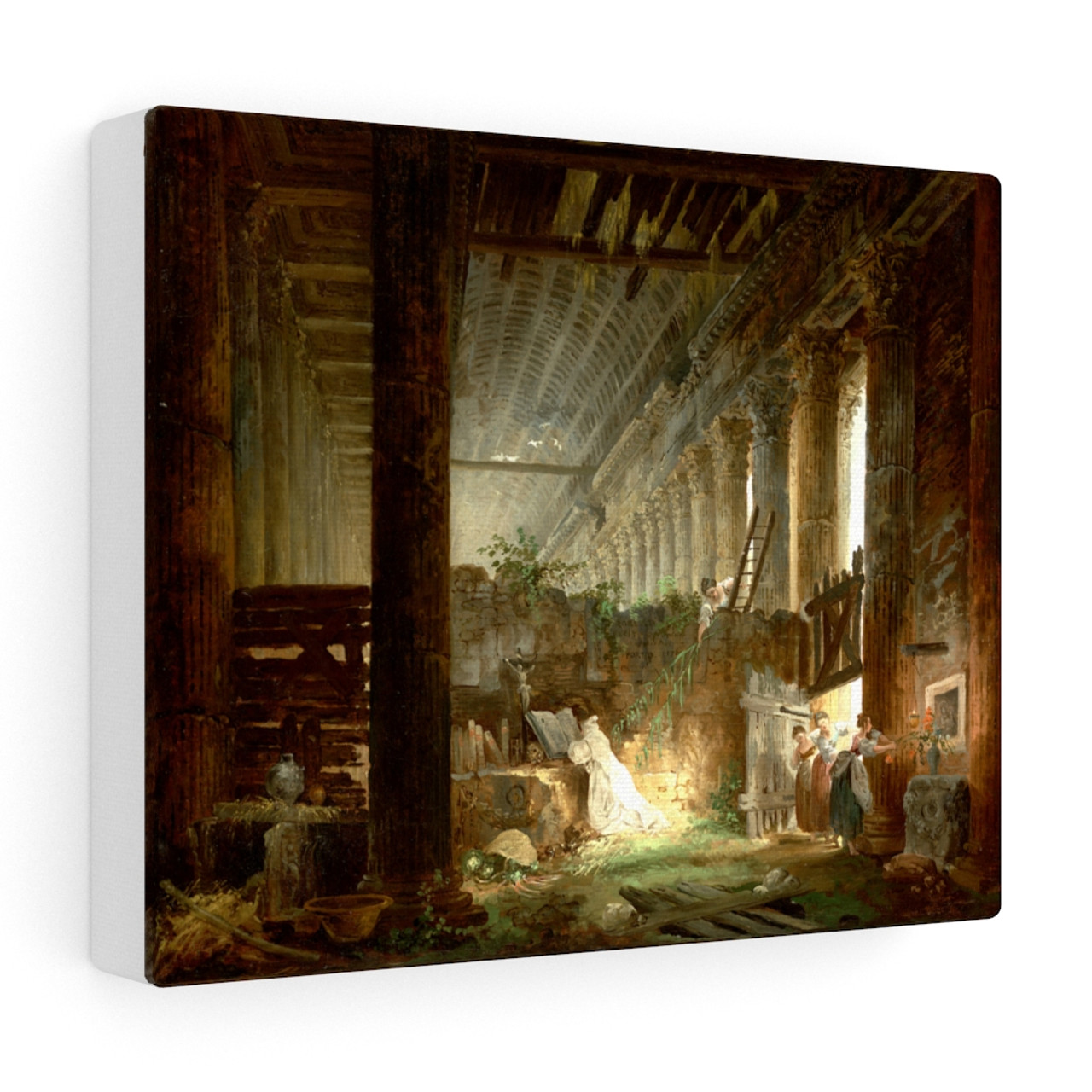Hubert Robert
BlogAdmin on 27th May 2022
Hubert Robert(1733-1808) was a French landscape painter. He is often called Robert des Ruines because many of his paintings depict romantic representations of Roman ruins in idealized surroundings. He left for Rome in 1754 and studied painting at the French Academy. He also met the French painter Jean Honore Fragonard in Rome. In 1760, they together traveled through southern Italy on a drawing expedition. Because of his strong fascination with architecture and the ruins, he came to be influenced by the works of the renowned etcher, Giovanni Battista Piranesi.

From Rome, he returned to Paris in 1765 and became a member of the French Royal Academy in 1766. He was a gifted decorative artist and Italian drawings formed the basis for his paintings.
He was able to hone his art under the patronage of the French nobility to some extent before the revolution until his fame as a talented and accomplished painter took care of his finances. He narrowly escaped death in the french revolution. This is because another prisoner of the same name was executed by mistake. The portrait of the painter of his time was painted by Marie Le Brun, another famous painter of the past.
His paintings had a scenic quality. Apart from being a painter, he was also known to be a garden decorator. He decorated the gardens of many palaces and gardens for the French royal family. He spent the full 11 years in Rome. During this period, he supported himself by producing portraits of the visiting connoisseurs. One such diplomat took Robert to Naples in 1760 where he visited the ruins of Pompeii. The Director of the French Academy urged him to sketch outdoors from nature.
Ruins of Ancient Rome
The ruins of Ancient Rome excited his keen interest. He spent his time in the company of young artists who were enthused by ‘the romantically overgrown ruins of ancient Rome‘. He became so much influenced by Roman ruins as the subject of his art that he earned the nickname ‘Robert des ruines‘. The sketches and drawings of these ruins that he collected in albums provided him with enough motifs to work on in his paintings throughout his life painting career.
Height of Success
Upon Robert’s return to Paris in 1765, he scaled the height of success more rapidly. His first exhibition at the Salon of 1767 consisted of 13 paintings and a number of drawings. The romanticized depiction of the Roman ruins by Robert in his paintings helped him gain so much art lovers’ appreciation that he exhibited his work at every Salon until 1802. He was appointed “Designer of the King’s Gardens”, “Keeper of the King’s Pictures”, and “Keeper of the Museum and Councilor to the Academy”
Death Deceived
Robert was arrested in October 1793 during the French Revolution and he was under 10-month-long detention in a prison. During this period of detention, he painted at least 53 paintings and numerous vignettes showing prison life. Robert was released from prison after the fall of Robespierre. Shortly after that, he narrowly escaped the guillotine by a quirk of luck as another prisoner with the same name was guillotined in his place. Thereafter, Robert found his name on the committee of five in charge of the new national museum at the Palais de Louvre. The French Revolution also caused the destruction of some of Robert’s paintings.
A hermit praying in the ruins of a Roman temple.
Robert painted this oil on canvas in 1760.
The painting shows a monk praying in what looks like the Roman ruins of a temple. The object of his devotion is Christ on a cross supported on the dilapidated wall behind it. He is reading from a large book. Next to the book, there is a skull, some prayer beads, and a sand clock. Skull and clock represent the fatality of the world, and how death is imminent.
The top half of the dilapidated half appears to be leading to another chamber in the temple’s ruins. Some inscriptions are visible on the wall, partly destroyed and partly covered by creepers growing on the wall. The section of the painting representing the left side of the chamber, contains some pots and hay littering the floor. It appears to be some kind of makeshift storage.
Some of the pillars still standing to show the enormous size of the structure. The far-off pillars that line up one side of the building are beautifully ornate and tell the viewer that the temple was once a large building. The temple and its location hold some significance for the monk.
Light pours into the painting through various places either from behind the dilapidated wall or through the window behind the monk. Light from the window falls on the monk’s robes and illuminates that part of the scene in the painting compared to the other parts. This is a characteristic feature of Robert’s painting.
The monk, wearing the white cassock-like garment, appears to be oblivious to the few women who are in the building. He is busy with the prayers with his back to them. One of the maidens appears to be taunting the hermit with a long twig from behind the dilapidated wall. She has climbed over the wall with the help of a ladder which is visible in the painting. Three other maidens appear to be creeping into the building to set up a shrine of some sort. One of them is decorating a vase with red flowers, while the others look on.






